How to Memorize using Mnemonics
- Posted by Brian Stocker MA
- Date January 10, 2007
- Comments 8 comments
First – some Quick Tips – Then some serious memory techniques
Audio Version of this Post
Tip 1 – Over-learn the material
Rather than learning it just well enough to pass the test. If you’re like most students, you’re probably tempted to study material until you get a single error-free recitation of it. But to really memorize it well enough to ensure that you know it for the test, you need many error-free repetitions.
Tip 2 – Use the word-substitution method.
This is good for memorizing information which is difficult to visualize. For instance, the word thermodynamics could be turned into the two words, Thermos and dynamite. Now you can create a visual image of a piece of dynamite carrying its Thermos to work–to remind you that thermodynamics is the conversion of energy and heat to do work.
Tip 3 – Create your own handouts.
Did you ever wonder why your instructors give you handouts with maps, outlines, diagrams, etc.? It’s because visual aids help solidify information in your memory. So even if they don’t give you the necessary handouts, you can create the same effect by making your own handouts.
Tip 4 – Desecrate your textbooks.
Your textbooks are not collector’s items; they’re made to be used and abused. So underline, highlight and jot down important key words as you read through the chapters. Just don’t go overboard with it. Remember: emphasizing everything emphasizes nothing. How to Study from your Textbooks
How do YOU study from textbooks? A quick Survey
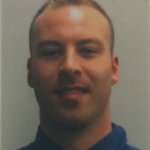
Color your Notes
I have always been a very visual learner. I must see and then preform it physically to learn it and later master it. Using this method, I began writing my notes in colors. Every other page, or category, I would change the color. This technique is very useful when I study medications and drugs. I will usually write the category of medication, such as pain medications, in a certain color. For example, Morphine, Fentanyl, Ketorolac and Ketamine are medications which can be used for treating pain. I would write out all the information for these medications in red. In contrast, I would write antiemetic medications, Gravol, Maxeran, Zofran, in blue and so on and so forth. This strategy has been very effective when recalling which medications belong to certain classes. This strategy could be used in a variety of different areas of study.
Tip 5 – Create practice tests and take them before the real thing.
This does more than to check if you’re ready for the real exam. It’s a known fact that your memory is enhanced when you engage in retrieval practice (recalling data from your long-term memory). And taking a test is an excellent retrieval practice.
Tip 6 – Teach the material to somebody else.
Set an appointment with a friend, preferably from the same class, when you will teach him some challenging material from the unit and when he will teach you something else challenging. Knowing that you have to teach it to someone else makes the information more important to you. And it’s a known fact that we remember the things we consider important.
There are other things you can do to improve your memory, but these six should do a lot to make sure that your study time is effective time.
Connect the Parts!
Whenever two things are connected – write them down together, draw arrows or whatever – remember the connection! It is easier to remember two things when there is a connection.
Mnemonic Techniques - Make up the Most Bizarre and Personalized Mnemonic Devices
Picture this, it’s the night before a big test and you keep forgetting the same things. You are starting to panic now as you imagine staring at a failed test mark. So, you go to google and type the only logical thing you can think of, “best study hacks”, and hit search. Of course, the first tip is to start a few weeks earlier and study a bit every day but that’s not exactly helpful right now, especially because you have tried and still can’t remember what year WWI ended or who invented the lightbulb for the life of you. But don’t worry because my favorite study tip is to make up the most bizarre and personalized mnemonic devices which will help you remember anything. I’m sure we have all heard of the basic ones such as BEDMAS to remember the order of operations in math, but those aren’t always given to you, besides, acronyms are boring, so let me show you how I create the most outlandish mnemonic devices.
Let’s start off with an example, in one of my junior science classes I had to remember who discovered the different parts of the atom. It was hard to remember the names and which parts of the atom they discovered and this is where my trick came into use. The scientist in question is J.J. Thomson. To me, that name sounds like a good name for a politician (my friends and family don’t agree but that doesn’t matter cause it is my tool!). People need to elect politicians which just so happens to sound like electrons. This helps me easily associate his name with the word electron and makes sense to me (which is the most important thing!)
More!
How to Memorize Anything
Get the Complete Guide to Studying
Get Organized and Get better MarksGet the Complete Guide to Taking Notes
Learn 5 note taking stylesTaking a Test? Complete Guide to Multiple Choice
Increase your Score on any Test!Serious Memory Technique #1 - The Memory Cloud Method
Read it Twice
As you study for an exam, make sure that you read the material two or more times to ensure that you understand and have totally absorbed the material. From your reading, create a list that outlines the most important points in the material. The second time you read the material, your brain will naturally more easily absorb this important information.
Now expand the list by adding more points. Read again and your brain will more easily absorb these new points….and then you look for new points to add to your growing cloud.
Label Significant Points
After you’re sure you’ve finished reading and taking notes, create labels for all significant points. Rewrite the list in an ascend / descend order, with the most important items at or near the top. Number these items, because as you do so, your brain will associate each item with a number, giving you an improved chance of remembering that information.
Draw a Cloud with a Distinctive Shape
Finish your cloud by drawing in a physical cloud. Try to give it a distinctive shape that will be easy to remember. The cloud will serve as an additional aid to bring the points back to your remembrance. The cloud works on several levels. First, the act of taking notes and then re-reading solidifies information in your brain. The numbering adds another memory tag, and the visual element of the distinctive cloud gives you something to try to recall as you take the exam.
There are some memory techniques that work well with groups. The Cloud is not one of them. That’s because it relies on you taking notes on what YOU considered important. Plus it relies on you creating a cloud image that is memorable to you. This takes some practice, but once you get the hang of the memory cloud, you’ll find yourself coming back to the memory cloud over and over again.
The Memory Palace Technique
Serious Memory Technique #2 - How to Memorize Using Mnemonics
Audio Version
Get the Complete Guide to Studying
Get Organized and Get better MarksGet the Complete Guide to Taking Notes
Learn 5 note taking stylesTaking a Test? Complete Guide to Multiple Choice
Increase your Score on any Test!Types of Mnemonics
Visual
Visual mnemonics involve creating visual images that sound like the information that is to be remembered. The image should be in some way related to the information. For example, if you are trying to remember that an event took place in Chillicothe, Ohio, you could visualize a cup of coffee sitting in a freezer (chilly coffee). The cup could have a picture of the state of Ohio on it to help you in remembering that Chillicothe is in Ohio.
This can be helpful in learning another language also. For example, rey is the Spanish word for king or monarch. You could visualize a crown with rays of light coming out from it. The Spanish verb caminar means to walk, so you could visualize an old El Camino model of car that is broken down, forcing you to walk.
Acronym
Acronyms use the first letter of each word to be remembered to create an easy-to-remember word. A well-known example of this is ROY G. BIV. The letters stand for red, orange, yellow, green, blue, indigo and violet, which are the colors of the spectrum in order.
o A variation of the acronym mnemonic is to use the letters to create a simple sentence. In the case of the spectrum colors, students in Britain often use Richard of York Gave Battle in Vain – as their memory device.
o A variation of the acronym mnemonic is to use the letters to create a simple sentence. In the case of the Kids Prefer Cheese Over Fried Green Spinach represents Kingdom, Phylum, Class, Order, Family, Genus, Species (taxonomy classifications, often appear in biology).
o The order of sharps in music can be remembered with Father Charles Goes Down And Ends Battles. Reverse that to Battles End and Down Goes Charles’ Father to get the order for flats.
o RAVEN stands for Remember Affect Verb Effect Noun. This is used to remember the difference between affect and effect.
Journey
Also known as Method of Loci, journey mnemonics simply involve taking a journey with the information. Basically, you walk through a familiar area and visualize the information in prominent locations. For example, you may walk through your home, from the entrance to your bedroom. Throughout your walk, you see famous paintings or sculptures along the walls, floor, or on the doors. By mentally retracing those steps during your art history exam, you are able to remember the artists and their works.
o This method does not have to be used with paintings, sculptures or other obviously visual items. You can combine this method with the visual technique to use it for any subject. For example, the crown with rays of light coming out of it may be hanging on your bedpost, while the El Camino is parked outside your window.
Rhymes
Rhymes and catchy phrases are an excellent mnemonic. They don’t have to be complicated and can be used for anything.
o I before E, except after C. This spelling mnemonic also comes in variations like I before E, except after C, and weird is just weird – or I before E, except after C, or when sounds like A, as in neighbor and weigh.
o For weather, the rhyme “Red skies at night, sailors delight; Red skies at morning, sailors take warning.”
o This group includes simple phrases like There are 3 e’s buried in the cemetery.
o For stalactites and stalagmites, remember that as the mites go up, the tites (tights) go down.
o Principle and principal – To remember which one you find in a school, use the saying, The princiPAL is my PAL.
o How I wish I could calculate pi. The number of letters in each word represents one digit of pi (How=3, I=1, etc.), giving you 3.141592.
Doesn’t have to Make Sense
Mnemonics can make studying a much easier process, regardless of your grade level. Mnemonics do not have to be logical, sensible or even related to your subject, and your favorites may not work for other people. The trick is to make sure your mnemonic is something you can remember.
Mnemonic Examples
Mnemonics Technique Example - How I do it

range. They describe the x and y values that are in a function/line. But how am I supposed to remember which describes the x and which describes the y?
- Assess the situation. Thankfully, this example is a binary so I only need a way of remembering one and can use the process of elimination to deduce the other.
- Pick one. I am going to use range since I can think of more word associations for range than for domain.
- State your objective. I have to remember that the range describes the y value.
- List your associations, A.K.A. what comes to mind when you think of range. For me this is:a. Distance
b. Free-range
c. Mountain range - Pick one of your associations and find other words to associate it with. Remember to keep in mind your end goal (which is y, in this case). If the first word you pick doesn’t work, try the next.a. Free-Range
- Cattle/Cows
- Cowboys
- Chicken
- Farms
- Now try to make a connection between one of the words and y. The earlier you do this the easier it will be but some of the outlandish ones really stick in your brain!
a. Cowboys say yeehaw! What letter does that start with? Y!
7. Now string it all together. The range is like a cattle range, which has cowboys on it, who say yeehaw! This starts with the letter y and therefore the range determines the y values.

Mnemonic Technique 1 – Association
When I first heard of this, I thought of it as weird and odd but it eventually worked out in the end. Through the power of mental association, you have the ability to attach a word, person, or thing to foreign content as a means of helping you remember the information. As an example, in my chemistry class, the main way that I remembered that Krypton was one of the seven noble gases was by associating it with Superman’s home planet which shares the same name.

Mnemonic Technique 2 – It only has to make sense to you!
I use very silly word associations to remember everything from biological concepts to vocabulary words. For example, I recently had to memorize Spanish words, including the word “el reclamo,” which means demand. I first noticed that it has the word “clam” in it, so I spent the entire time that I was studying saying to myself “the clam demands,” and it worked. I also remembered the word “mermado” based on mermaids, and started associating the word “teachers” with “magic” to remember “elmagisterio.”
I use this same strategy for more complex things like processes, which most people don’t think works. For example, action potentials in neurons and the membranes of muscle cells are triggered by sodium, chemical symbol Na, entering the cell, and the process ends when potassium exits. I had trouble remembering which ion went in, and which went out. So, I wrote “Nain” and “Potout” in my notes. To me, that was a totally normal way to memorize that.
However, a friend of mine looked at my notes and asked if I’d had a stroke when writing it. Even after I explained what it meant, they still couldn’t’ believe that that gibberish meant anything to me, let alone helped me learn. I had never realized how differently my brain works, but since then, I’ve noticed it in a lot of things. For example, I do math much differently from other people.
For example, when adding in my head, I add however many it takes to get to the next multiple of 10, then subtract the number I just used.

Mnemonic Technique 3 – Study in your own Way
Everyone studies in their own way and has their own strategies to excel, and now, I have one too. Rather than spend all day glued to my desk doing nothing, I study. I feel the need to clarify; no, I do not suddenly enjoy reading pages on pages about the Krebs cycle. However, I do make myself acronyms and mnemonics that make me laugh, and as a teeny tiny side effect, also remember what I need to about a certain topic. For instance, let me explain to you how I memorize the Krebs cycle.
NaC, NaC, Ga, Fa, Na!
Try saying that out loud. Sounds like some sort of alien language, I know, but bear with me. A common question regarding the Krebs cycle, asks what the net energy production is, in a single cycle. Here is how I remember it. The ‘Na’ stands for NADH, the ‘C’ stands for CO2, the ‘Ga’ stands for GTP, the ‘Fa’ stands for FADH2. There are 3 ‘Na’ in the mnemonic, telling me that 3 molecules of NADH are produced; the 2 ‘C’ tells me that 2 molecules of ‘CO2’ are produced; the single ‘Ga’ lets me know that 1 GTP molecule has been produced and the ‘Fa’ tells me that 1 molecule of FADH2 has been produced.
NaC, NaC, Ga, Fa, Na!!
I do not feel the need to “study” all day for a test, because now when I do study, I also make myself laugh, which only further helps me understand and remember, and also keeps me engaged. Would you look at that; I have made the oh so boring Krebs cycle, significantly more bearable.
In psychology, for example, the human brain and the different parts must be labelled. So I start with a list:
Parts of the Brain:
- Medulla
- Amygdala
- Hippocampus
- Thalamus
- Hypothalamus
- Pons
- Cerebellum
- Limbic System
- Corpus Callosum
If I can’t remember the list after writing it multiple times, I create my memory sentence. Once I know what I’ll need to label, I turn my focus to the diagram. Same approach, same repetition. It’s repetition of repetition. Go figure.
Mnemonic Generator
I use a website called mnemonic generator and it is incredibly effective for me. Sometimes, it is necessary to memorize certain things while studying and I have found using a mnemonic the most effective strategy. This has been very beneficial when studying pharmacology and having to memorize indications, contraindications and side effects of specific medications. I remember during my first emergency training course, we were required to verbalize the mandatory set of vital signs we needed to gain during our scenario testing. The list included; Skin (color and condition), level of consciousness, eyes (pupil reaction), respirations, pulse, temperature, blood pressure, blood glucose level, pulse oximetry reading. The mnemonic I came up with was “SLERP, THE BEST BEER POSSIBLE.” The first phrase “SLERP” represents the first five vital signs and the first letters of the remaining phrases correspond to the remainder. The more extravagant and ridiculous, the better, and this silly but effective mnemonic still pops into my brain to this day.
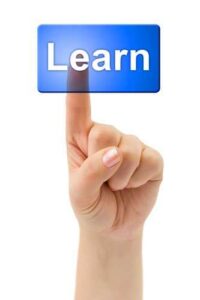
How to Study
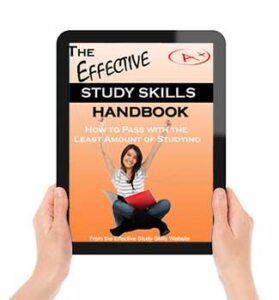
… without endless hours of cramming
… without the need for tutoring
… and without sacrificing the things that matter to you!
Multiple Choice Secrets!
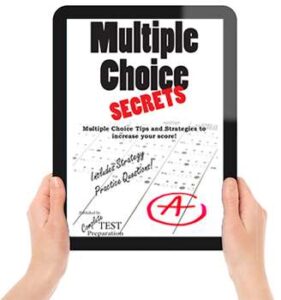
How to Take Notes
Learn 5 Note Taking Methods – With Full Explanation and Examples!
Taking notes is an essential academic skill and you will be doing a LOT!
Learn More and Start Practicing
Date Published: Wednesday, January 10th, 2007
Date Modified: Thursday, November 13th, 2025
You may also like
The Canadian Red Seal Roadmap: Your Path to Certification
This roadmap outlines the typical journey from your first entrance exam to becoming a nationally recognized Red Seal Journeyperson.
English Language Tests for Canadian Citizenship
English Language Test is an assessment that measures your English proficiency and is a required component in the Canadian citizenship application process. The purpose is to make sure you have adequate knowledge and fluency in English to communicate and integrate …
Canada Post GAT Practice Questions
In January 2023 Canada Post replaced the GAT test with the General Competency Test Level 2 GCT Level 2 Practice questions here


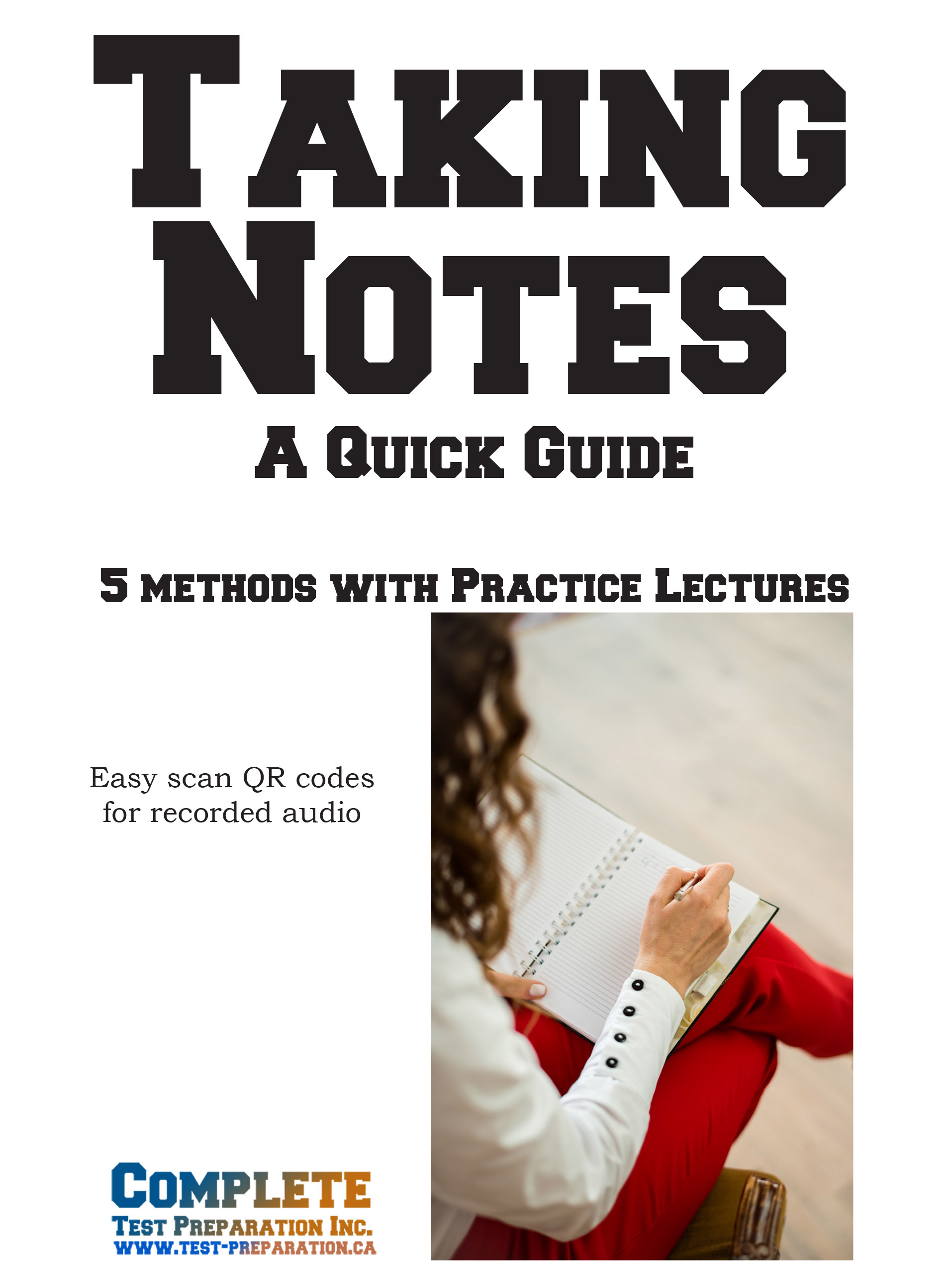
8 Comments
i think u all are full of crap some people cant remember stuff easily
Thanks for your comment. Remember that everyone is different and some people remember things easier than others. Also, don’t forget, there are many many different types of exams, and some require more memorization than others.
Mikayla, you do not have to agree, there is no need for rudeness.
I do not know whether it’s just me or if perhaps everybody else encountering problems with your blog. It looks like some of the written text within your posts are running off the screen. Can someone else please comment and let me know if this is happening to them too? This may be a problem with my web browser because I’ve had this happen previously.
Thanks
I like your blog! Do you have any tips and hints for aspiring writers?
I’m planning to start my own website soon but I’m a little lost on everything.
Thanks for sharing your thoughts about Mnemonics. Regards
Will there be a part 2?
Could do! thanks